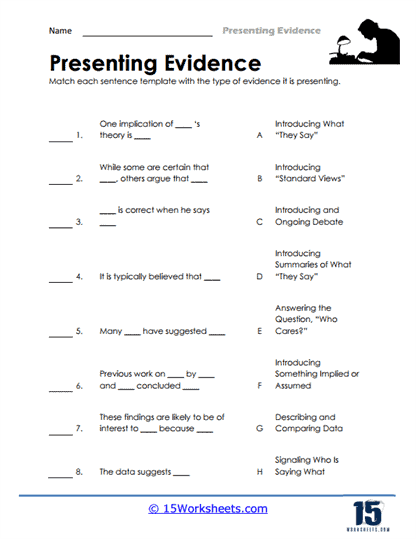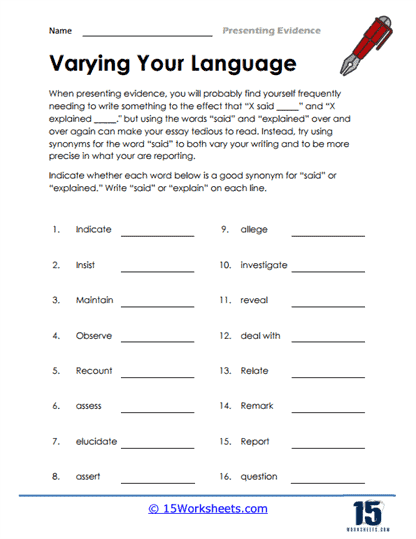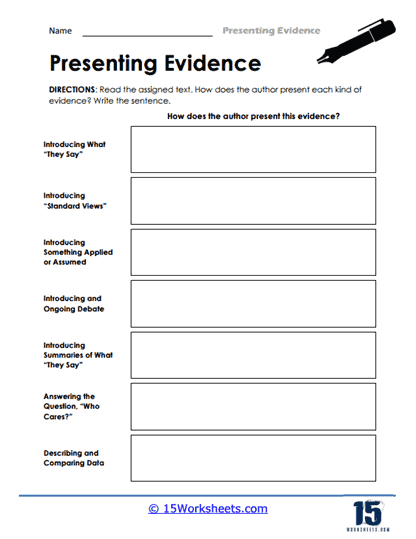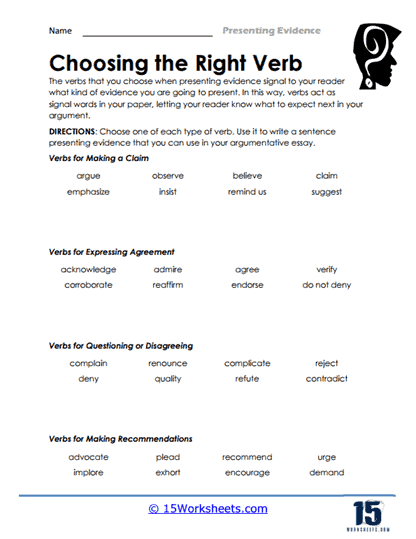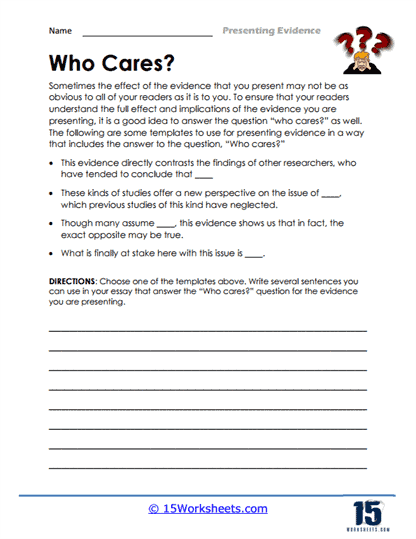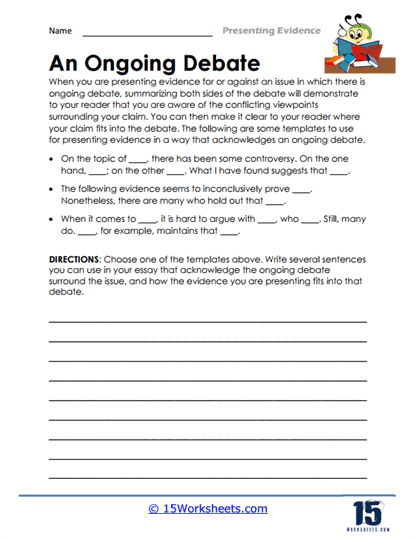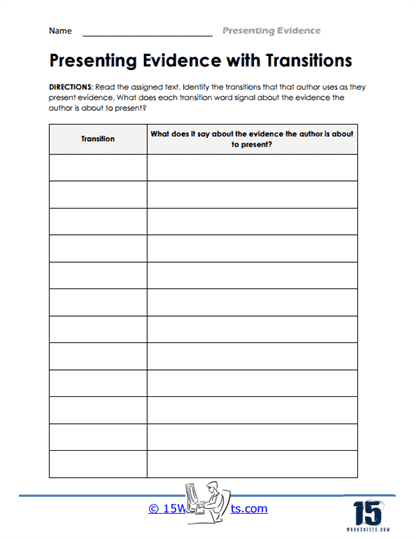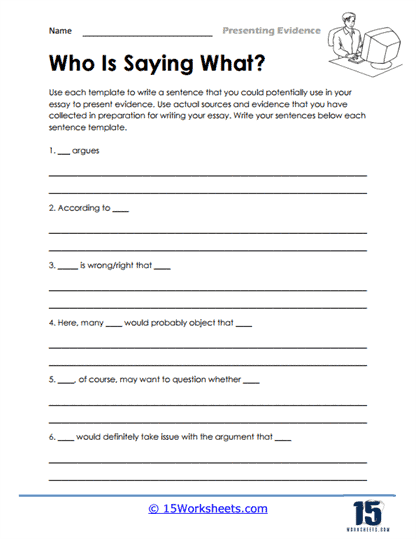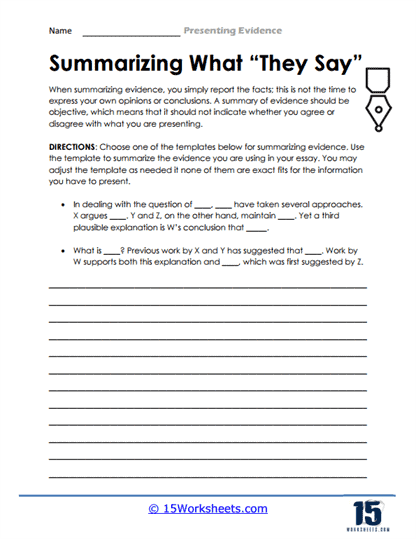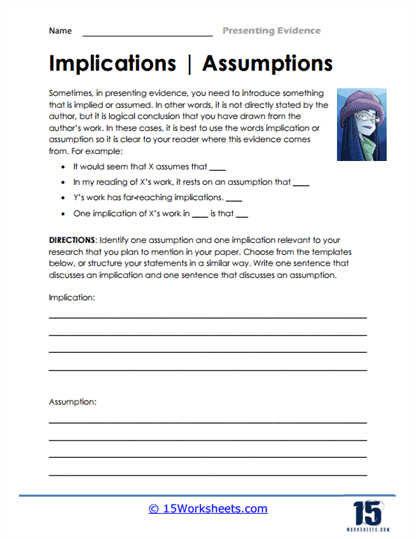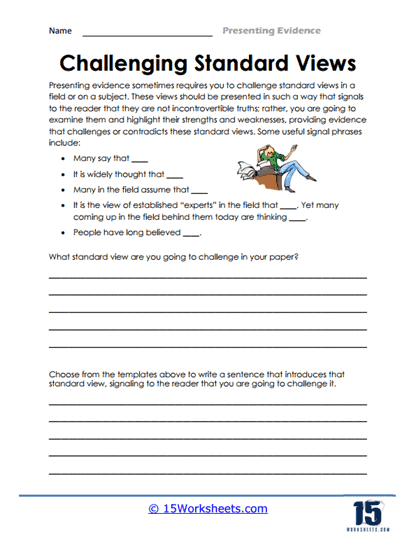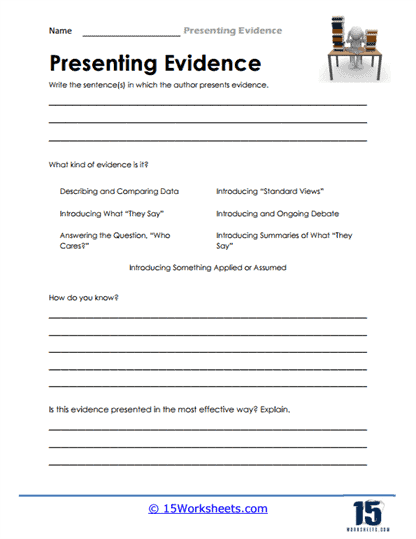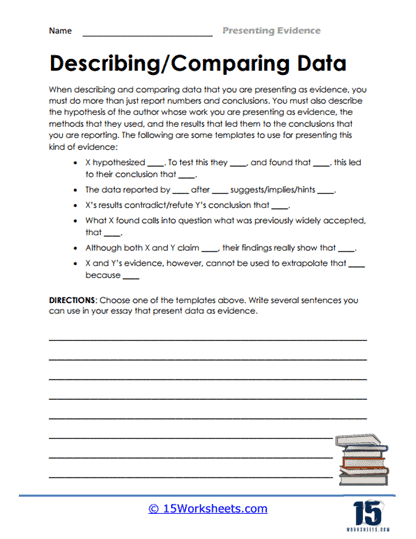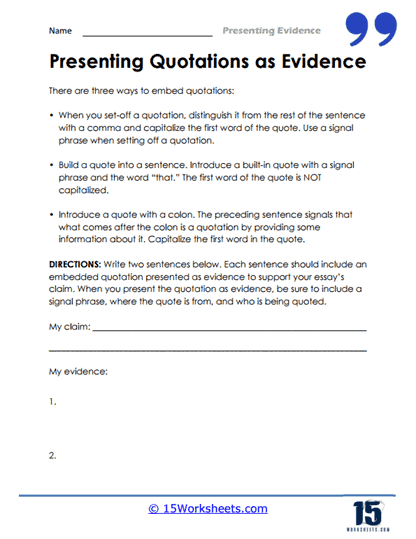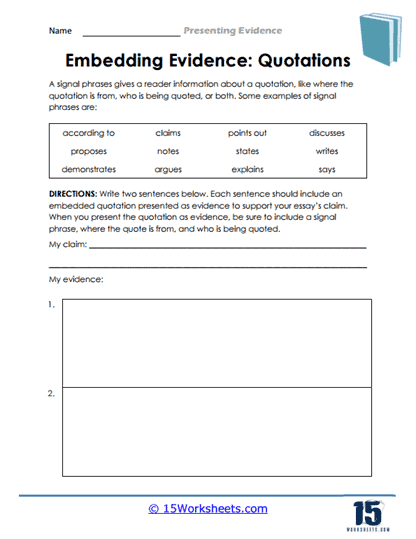Presenting Evidence Worksheets
All About These 15 Worksheets
Many times during your education career, you are asked to present a paper or an essay around a certain hypothesis. Academic writing is not limited to just a single discipline, such as English; rather, there is literature for every subject or field you pursue. Most of us get the chance to write an academic paper, a literature review, or an essay in our final year projects or when we take up a course to learn how to write an academic paper.
To complete an academic paper or article, you need to incorporate evidence in your writing. There are many ways to introduce evidence in an essay, but before we get to that, we need to know which things count as evidence.
Types of Evidence in Literature
Evidence in literature means to use something that has been proven true before. Now, this truth could be in any form, such as a claim made by a scientific theory, a deduction from a professor, statistics, results from surveys, or prior research which has been accepted. For any analytical or persuasive essay, there are always some facts and figures to support your claim.
Importance of Adding an Evidence in Literature
By introducing evidence in your writing, you can strengthen your claim. Evidence will further show how invested you are in the topic and the research you have conducted. It will provide you a different edge with readers who will realize how your knowledge and opinions differ from others in your area of expertise. Moreover, it informs the reader about your niche and understanding and perception of an idea.
Ways to Introduce Evidence in an Essay
There are typically four ways to introduce evidence in any paper or essay, which are as follows:
Quotation
Using a quote means copying another author’s or book’s exact words and writing them in your paper. However, people sometimes do not add quotation marks, the author’s or the source’s name, or further explain the reason for its use by relating it to the claim. The redundancy of the quotes also does not impact a reader because it looks as if no effort was put into writing.
Forming a Stance
To form an opinion on a particular subject, you must combine research works of different authors and consider their views before synthesizing one yourself. It must be in your own words, and all the authors must be given credit for where the idea was drawn.
For this case, you need to not only describe the features of the evidence, but it needs to be related to the stance you take. Make sure you group the authors and only use relevant features in your research while clearly stating which idea belongs to which author.
Putting in a Summary
Another way to introduce evidence is to summarize an author’s viewpoints on a particular topic and provide a short version of it in your own words. Always use an in-text citation method for this evidence style. The in-text citation quotes the surname and the publication’s year right before the evidence’s summary.
One of the common mistakes people make while presenting this evidence in literature is using unnecessary information or only describing the author’s work without giving their input.
Paraphrasing the Text
Paraphrasing means taking another person’s established work and rephrasing it in your own words and sentence structure to give the idea a new look. Then provide the original credit to the source in the reference chapter.
Important Points to Note
Follow a balanced pattern when you add any evidence to your essay. Always make a new paragraph when you make a statement. Start with a claim, then add the evidence in any form; after that, explain that even if it needs no explanation. At the end, link it to the thesis statement you added in the essay’s introductory paragraph.

